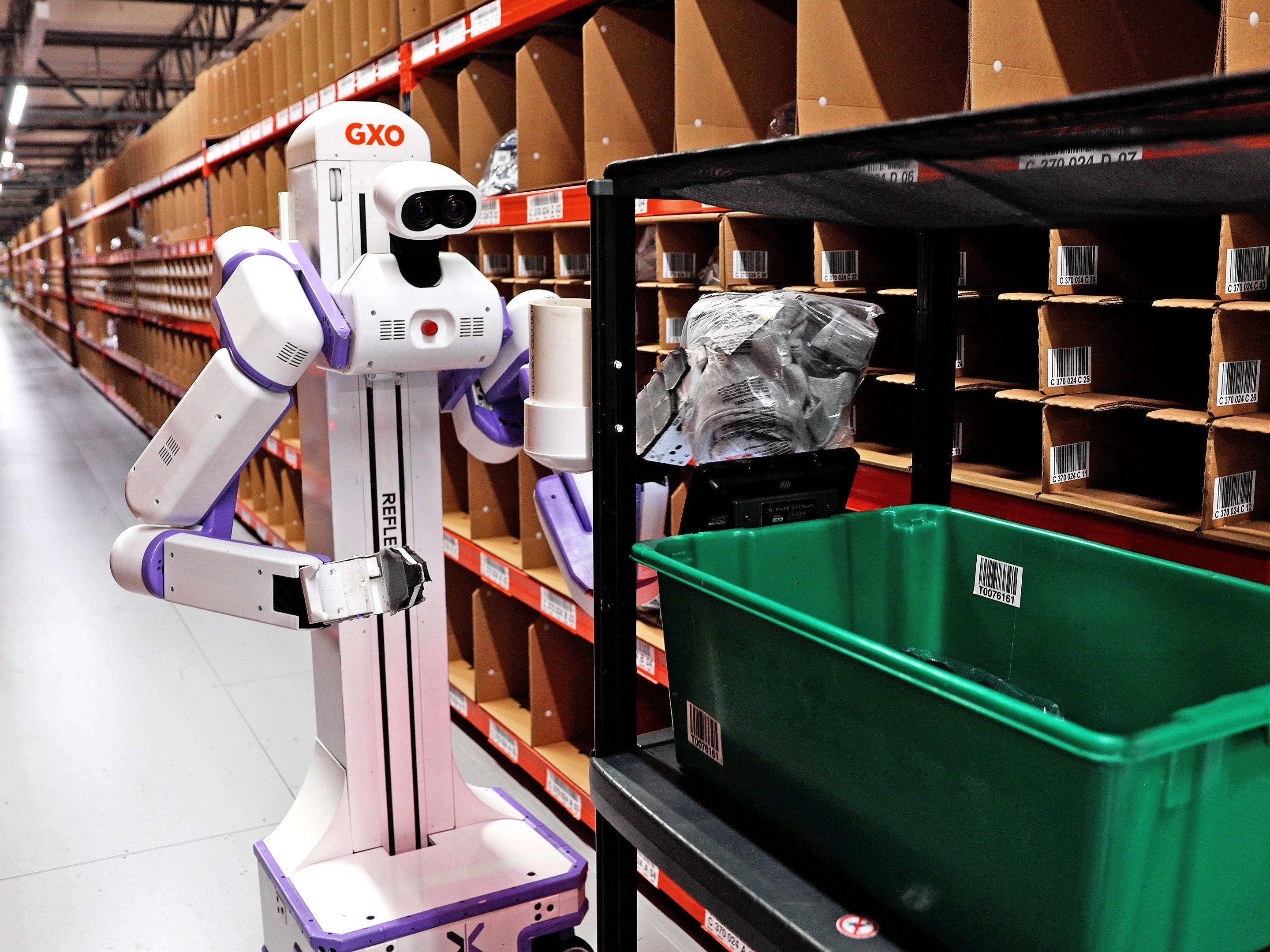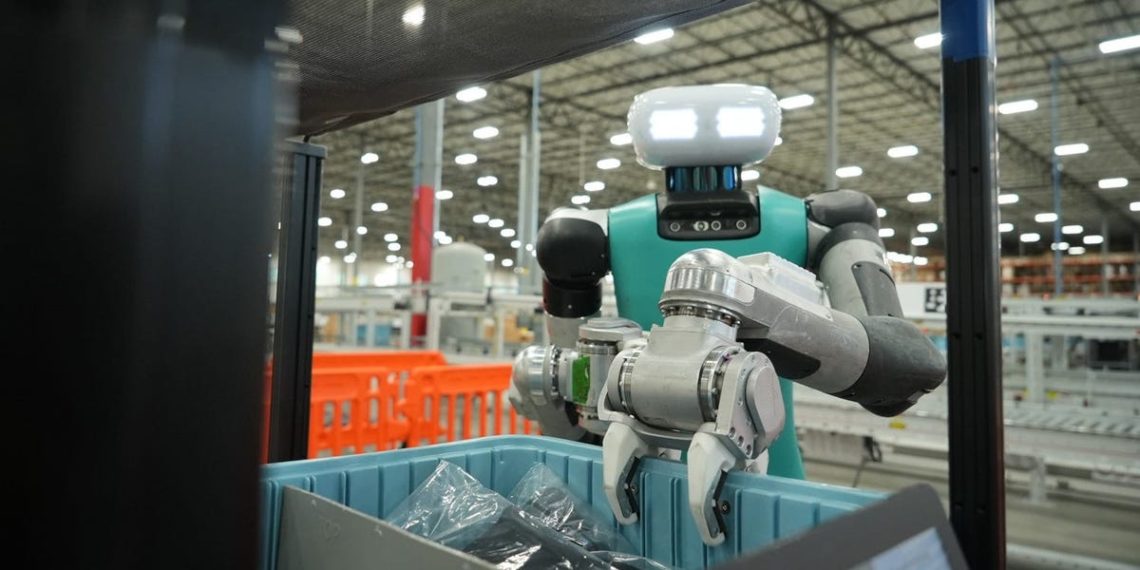
Agility Robotics
Tech companies and investors are pouring billions of dollars into a future in which human-like robots work alongside people in warehouses, hospitals, restaurants, and homes. The goal is that humanoid robots that can carry objects and walk on two feet could help to fill labor shortages across industries and take on tasks that might be harmful to humans.
While the idea of having a robot do chores around the house might sound appealing, humanoids most often start their “careers” in warehouses and manufacturing facilities.
That’s because humanoids — and robots in general — tend to work best in structured environments, CB Insights’ senior lead analyst Benjamin Lawrence told Business Insider.
“A lot of factories and warehouses are very similar, so you can set up replicating tasks much more easily,” he said.
“When you think of a home, for example, you need to make sure that the humanoid is safe with grandma, with the kids, with the pets, that it doesn’t step on the dog’s tail. You need to make sure that the humanoid is aware that there’s a candle burning on that table and doesn’t accidentally knock it over and cause a house fire.”
Some experts are skeptical about a future filled with humanoid robots. They’re expensive and complex to manufacture, and outside a handful of highly publicized tests, they’re still largely unproven.
But investor interest is taking off, with companies making humanoid robots raising a collective $1.2 billion in venture funding in 2024, according to CB Insights. The sector is on track to more than double funding to $3 billion this year. Agility Robotics is raising $400 million at a $1.75 billion valuation, The Information reported earlier this month. Apptronik, which makes the Apollo humanoid robot, announced a $350 million Series A funding round in February.
Big Tech companies are also betting big on humanoids — some by supplying their foundational models to robotics manufacturers, like Google DeepMind is doing with Apptronik, and others by making both the models and the hardware themselves, like Tesla is with its Optimus robot. Big Tech views humanoids as the natural next step in AI, as the industry’s interest has gone from generative AI to agentic AI and then on to physical AI. Advances in natural language processing have also made training robots simpler.
“The ChatGPT moment for general robotics is just around the corner,” Nvidia CEO Jensen Huang said during his keynote speech at CES in January.
‘We’re not 10 years away, that’s for sure’
Many of the early users of humanoids are auto manufacturers. There’s already quite a bit of automation in car plants, so moving on to humanoids is a natural progression, Lawrence said.
Ford was Agility’s first customer, buying the first two Digit robots in 2020. The two companies had previously partnered on a last-mile delivery project. Elon Musk has said Tesla will have “genuinely useful humanoid robots in low production for Tesla internal use” this year and available to other companies at a price tag of $20,000 to $30,000 in 2026. BMW piloted humanoid robots made by Figure, using them to insert sheet metal parts into a car’s chassis. And, Hyundai acquired Boston Dynamics, a leader in humanoid robotics, from Softbank for $1.1 billion in 2021.
Retailers are also testing humanoids in their warehouses. Amazon is testing Digit, the humanoid robot made by Agility, in addition to the robots it manufactures in-house. Logistics giant GXO is also testing Digit and humanoids from Apptronik and Reflex Robotics.

GXO
“We are going really broad and aggressive on the category,” Adrian Stoch, GXO’s chief automation officer Adrian Stoch told BI in a recent interview. “It’s because of where we see this going.”
Just how close humanoid coworkers are to becoming a reality in warehouses is still uncertain.
There are a few roadblocks. The first is price, with a single humanoid robot costing several tens of thousands of dollars (though several manufacturers in China, including Unitree, have recently revealed models at a significantly lower price point).
The second potential roadblock is the technology itself.
“You need to have humanoids that are highly adaptable to every different warehouse, to a range of language commands, and to be able to infer those commands and work within the existing structure,” Lawrence said. “It’s just very difficult to do that.”
The current tests are relatively small. For example, GXO has more than 1,000 warehouses and employs more than 150,000 people, yet it has just two Digit units moving heavy boxes to a conveyor belt in one facility.
“We’re not at wide-scale deployment and commercial viability yet, but we’re not 10 years away, that’s for sure,” Stoch said.
When is the human form right for the job?
There’s also the question of whether robots that can walk on two feet and manipulate objects with two hands are ideal for completing tasks.
Robotic arms that can pick up and place items are now common in warehouses. There are also automated guided vehicles, or AGVs, that transport items around warehouses using predefined routes on a line or wire, and autonomous mobile robots, or AMRs, that can get around on their own. Boston Dynamics has also made a robotic dog that can do things like read meters and detect leaks.
“There are very few use cases where the best robotic form is something that looks like you,” Forrester analyst Paul Miller said.
He added that the work a human does could likely best be replicated with a combination of technologies, not just a robot that happens to have a similar look to a human.
“A human worker in their job does a lot of different tasks. Some of those tasks are best performed by a human being. Some tasks are best performed by software,” Miller said. “Some of those tasks are best performed by a physical automation, some kind of robot.”
“It’s about working out how you break those tasks up.”
Have a tip? Contact this reporter via email at [email protected] or Signal at @mlstone.04. Use a personal email address and a nonwork device; here’s our guide to sharing information securely.
The post Humanoid robots are coming to a warehouse near you appeared first on Business Insider.




